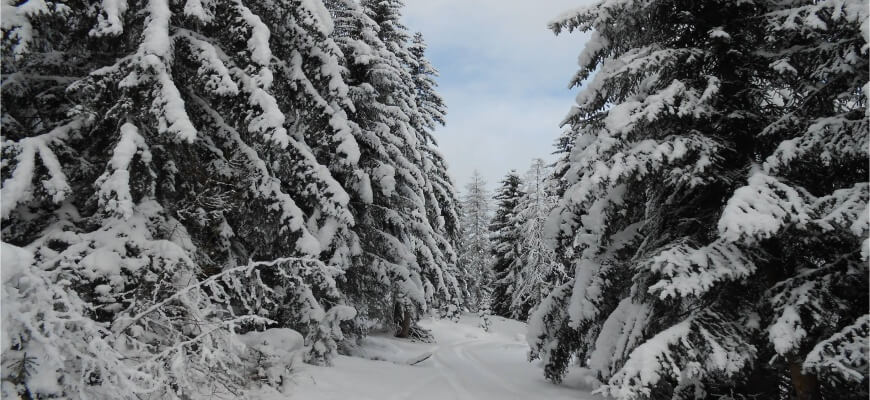New Year’s greetings to our readers. So far, me and my colleagues have written about many different topics, organisms, complex systems, but where can one actually apply the knowledge gained from Biomimetics? The answer is: „Everywhere!“. In this article I will discuss the diversity of Biomimetics and how we can contribute to a sustainable living. The inspiration for this article came to me after confronting a friend who was curious to know the diversity of the field’s of Biomimetics and how it could be used.
In my experience with Biomimetics I have come to learn that the path for a sustainable living can be achieved when we lay emphasis on each and every element of our living rather than a race to cheap and unlimited energy supply. Plant leaves for example use only 0.1 % of the solar energy which is available to them, not because they can’t harvest it but they don’t need it. All the other aspects like heating, cooling, self-cleaning and self-healing are achieved using other optimized solutions which are a result of millions of years of evolution.
I will try to describe a few of the many fields where problems can be solved using Biomimetics.
Heating and cooling
Earth’s climate offers a variety of conditions with regard to temperature, humidity, light etc. Natural organisms which are subjected to these harsh climatic conditions are quite adaptable to such conditions. The techniques used by nature to strive in extreme heat and cold could also be used for keeping our homes at an optimum temperature without using a large amount of energy. Sounds easy when said like that, but where to find such techniques in nature?
Examples:
- Plants use smart techniques like evaporative cooling and adapting their orientation for controlling the solar heat impacting their surface to avoid excessive heating.
- Insects like wasps use smart architecture for having an optimum temperature in their nests by having no air movement between the layers of the nest and thus producing an insulation layer.
- Animals like polar bears living in freezing temperatures minimize the heat loss from their body by isolating the body from the cold environment and use light to prevent themselves from freezing [1 & 2].
- Penguins use their fins like radiators for losing excess heat from their bodies [3]
Air circulation
Animals living in underground constructions face the biggest challenge of air circulation. They tend to have closed structures as their homes in order to stay safe from predators. Ants and prairie dogs are one of the best examples for smart air circulation, they achieve this feat using a combination of morphology and natural flow of the wind for ventilation and also to cool their homes [4]. Prairie dogs dig two entrances for their burrows each of them at a different height to facilitate natural wind flow. This works due to the difference in flow rate in wind at different heights combined with different pressures as the wind enters through one tower and leaves from another causing a natural air circulation.

Figure 1: Prairie dog Burrow ventilation
Apart from having smart construction, ants choose the material as an influence on the overall sustenance of the homes. Ant homes being made of mud absorb moisture in the night from the surrounding humid air and use this moisture to cool it during the day by means of evaporative cooling. This facilitates their homes to remain cool in spite of high temperatures in summer.
Water condensation
In many areas where water resources are limited, nature uses water condensation to obtain water from the air. This is done by both plants and animals; a beetle from Namibia uses a combination of hydrophobic and hydrophilic bumps for condensing water from humid air. This technique (known as fog catching) is already being used in many places where there is a scarcity of water or it is difficult to transport water. Huge nets are one such structure which is being used to condense water from moist air and extensive research is being done to optimize these nets by studying the organisms in nature.

Figure 2: Nets for Fog catching
Self cleaning
Nature uses different strategies like micro architeture and wax layers to achieve self cleaning. A much more detailed article on this specific topic by my colleague Anja Soklic can be found here http://www.blogionik.org/self-cleaning-surfaces/
Above I have tried to describe some of nature’s techniques which I found quite inspiring. Many of such techniques from nature can be used as an inspiration for designing homes which might not be completely sustainable, but a step towards it. If you came across any such principle in nature which might guide us to sustainable living please do share with us.
References:
- Øritsland, Nils Are. „Temperature regulation of the polar bear (Thalarctos maritimus).“ Comparative Biochemistry and Physiology 37.2 (1970): 225-233.
- Koon, Daniel W. „Is polar bear hair fiber optic?.“ Applied optics 37.15 (1998): 3198-3200.
- Precht, Herbert, et al. „Heat exchange with the environment.“ Temperature and life. Springer Berlin Heidelberg, 1973. 545-564.
- Ganot, Y., M. I. Dragila, and N. Weisbrod. „Impact of thermal convection on air circulation in a mammalian burrow under arid conditions.“ Journal of Arid Environments 84 (2012): 51-62.
- Figure 1 : Author/Photographer/Artist: Emily Harrington Uploaded: 2012-05-17 20:49:28
- Figure 2 : Neil Hall (images captured in the desolate Atacama Desert).



